Ever wondered what it’s like to own a dog that makes even seasoned vets do a double-take? Welcome to the world of rare breeds, where “purebred” meets “never heard of it.” We’ve scoured the globe to bring you 16 of the most elusive canines, ranked from “Oh, I think I’ve seen one of those” to “Are you sure that’s not a mythical creature?” These aren’t your run-of-the-mill Labradoodles or French Bulldogs – these are the canine equivalent of limited-edition collectibles. So, grab your favorite chew toy and let’s dive into this list of dogs so uncommon, you might need to explain to your vet what species they are. From the shaggy Polish Lowland Sheepdog to the nearly extinct Sakhalin Husky, these pups are redefining what it means to be exclusive. Ready to meet some dogs that are rarer than a quiet moment at a dog park? Let’s go!
16. Polish Lowland Sheepdog
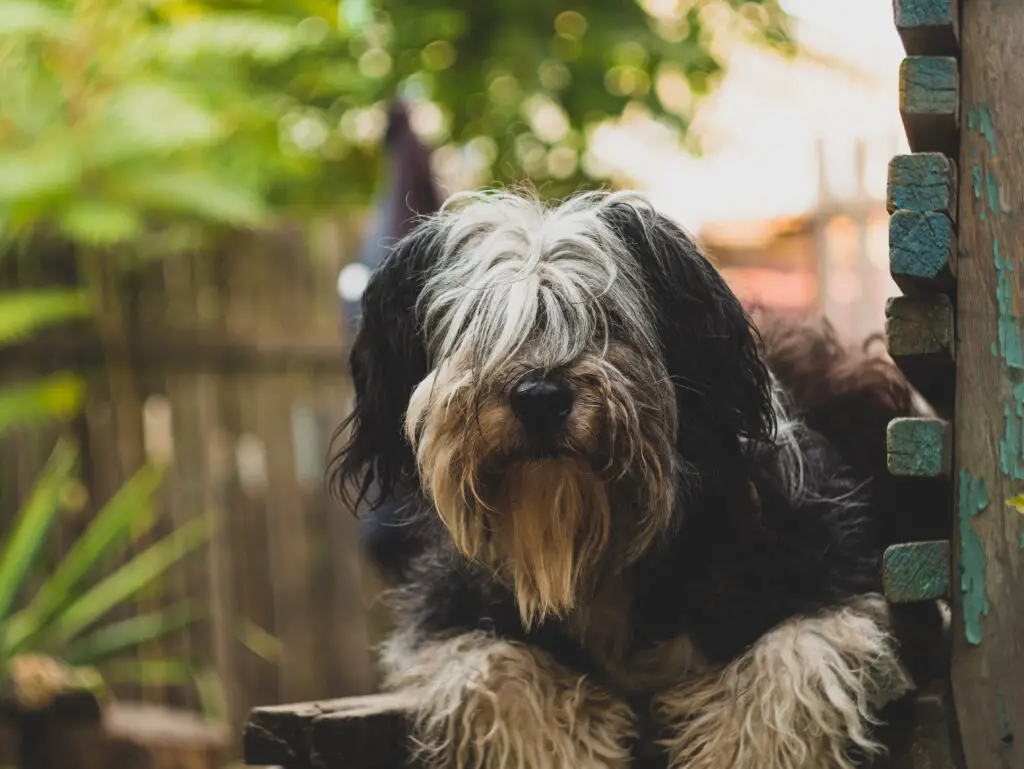
The Polish Lowland Sheepdog, affectionately known as the PON (Polski Owczarek Nizinny), looks like it’s perpetually having a bad hair day, but don’t let that fool you. These shaggy smarties have been herding sheep since the 16th century. The American Polish Lowland Sheepdog Club notes that they nearly disappeared during World War II, but bounced back thanks to some dedicated breeders. Standing 17-20 inches tall and weighing 30-50 pounds, PONs are like mobile carpets with a brain. The American Kennel Club reports they can learn up to 200 words, making them smarter than some politicians.
While they’re becoming more popular, with over 1,500 in the US, they’re still a relatively uncommon sight outside Poland. PONs are known for their intelligence, adaptability, and strong work ethic. Their shaggy, weather-resistant double coat comes in various colors and patterns, requiring regular grooming to prevent matting. Despite their increasing numbers, they’re still considered a rare breed, especially compared to more popular herding dogs like Border Collies or Australian Shepherds.
15. Lagotto Romagnolo

If Sherlock Holmes was reincarnated as a dog, he’d be a Lagotto Romagnolo. These curly-coated Italians were originally water retrievers but have since upgraded to truffle hunting. The Lagotto Romagnolo Club of America explains that their keen noses can sniff out truffles buried up to three feet underground. Standing 16-19 inches tall and weighing 24-35 pounds, Lagotti are the perfect size for both apartment living and countryside romps. The American Kennel Club notes that their popularity is growing, with about 3,000 in the US, thanks to their hypoallergenic coats and winning personalities.
The Lagotto’s history dates back to the Italian Renaissance, where they were used as water dogs in the marshlands of Romagna. Their name literally means “lake dog from Romagna.” In the 19th century, as marshlands were drained for agriculture, the breed transitioned to truffle hunting. Their thick, curly coat, which can be white, brown, orange, or roan, protected them in both water and underbrush. Lagotti are known for their intelligence, affection, and high energy levels. They excel in various dog sports and make excellent family companions, but their strong digging instinct means you might want to keep an eye on your garden!
14. Thai Ridgeback

The Thai Ridgeback is the punk rocker of the dog world, sporting a mohawk that would make any 80s rock star jealous. According to the Thai Ridgeback Club of America, these independent thinkers have been around for about 350 years, but they’re still pretty scarce outside Thailand. Standing 20-24 inches tall and weighing 35-75 pounds, Thai Ridgebacks come in four colors: red, fawn, blue, and black. The American Kennel Club reports that there are only about 300 in the US. They’re one of only three breeds with a ridge of hair growing in the opposite direction along their back, making them a true rarity in the canine world.
Thai Ridgebacks were originally bred for hunting and guarding in eastern Thailand. Their agility and strength made them excellent companions for hunters tracking everything from cobras to wild boar. The breed remained largely unknown outside Thailand until the 1990s. Thai Ridgebacks are known for their intelligence and independent nature, which can make them challenging for novice dog owners. They’re also known for their loyalty and protective instincts, making them excellent guard dogs. Interestingly, the breed gained some fame in Thailand after being featured in a popular 2007 Thai movie called “Ma-Mha.”
13. Sloughi
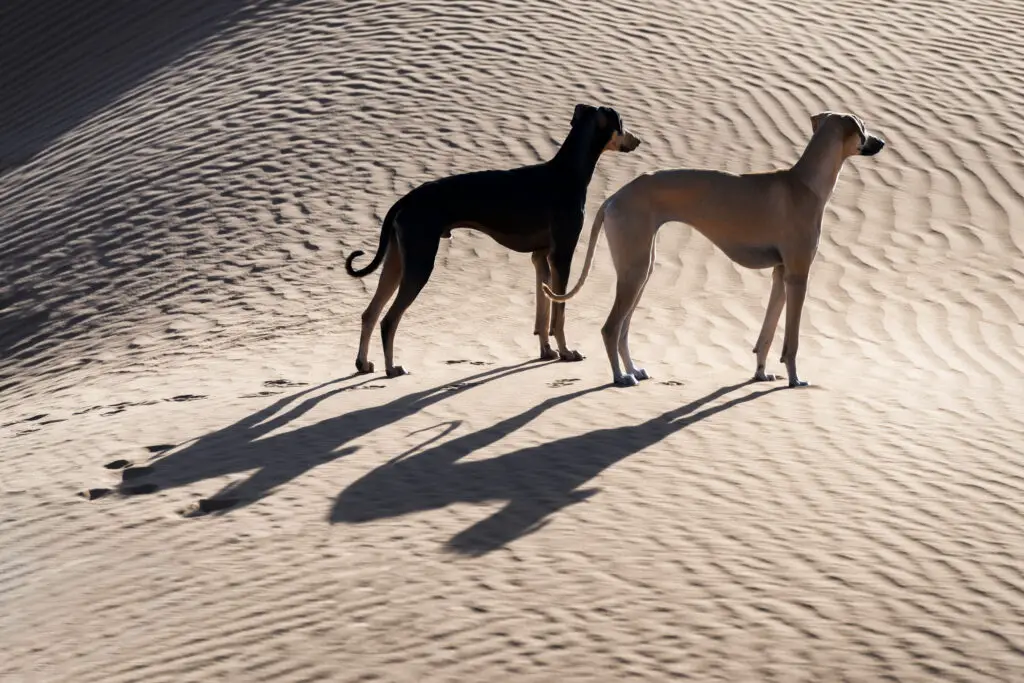
The Sloughi, or Arabian Greyhound, is the supermodel of the Sahara. The American Kennel Club explains that these elegant hounds were the favorites of North African nomads, prized for their speed and grace. They only made it to the AKC’s official list in 2016, fashionably late as always. Standing 24-29 inches tall and weighing 40-65 pounds, Sloughis are built for speed and endurance. The Sloughi Fanciers Association of America estimates there are only about 500-600 in the US. Interestingly, they’re one of the few dog breeds mentioned in the Koran, giving them a touch of divine approval.
Sloughis have a long history in North Africa, with depictions of similar dogs found in ancient Egyptian tombs. They were traditionally used for hunting gazelles and hares in the desert. Their thin skin and short coat, which can be various shades of sand to mahogany, help them cope with the extreme desert temperatures. Sloughis are known for their loyalty to their families but can be aloof with strangers. They have a strong prey drive and need plenty of exercise. Despite their ancient lineage, Sloughis remain rare outside their native regions, partly due to strict exportation laws in North African countries aimed at preserving the breed’s purity.
12. Xoloitzcuintli
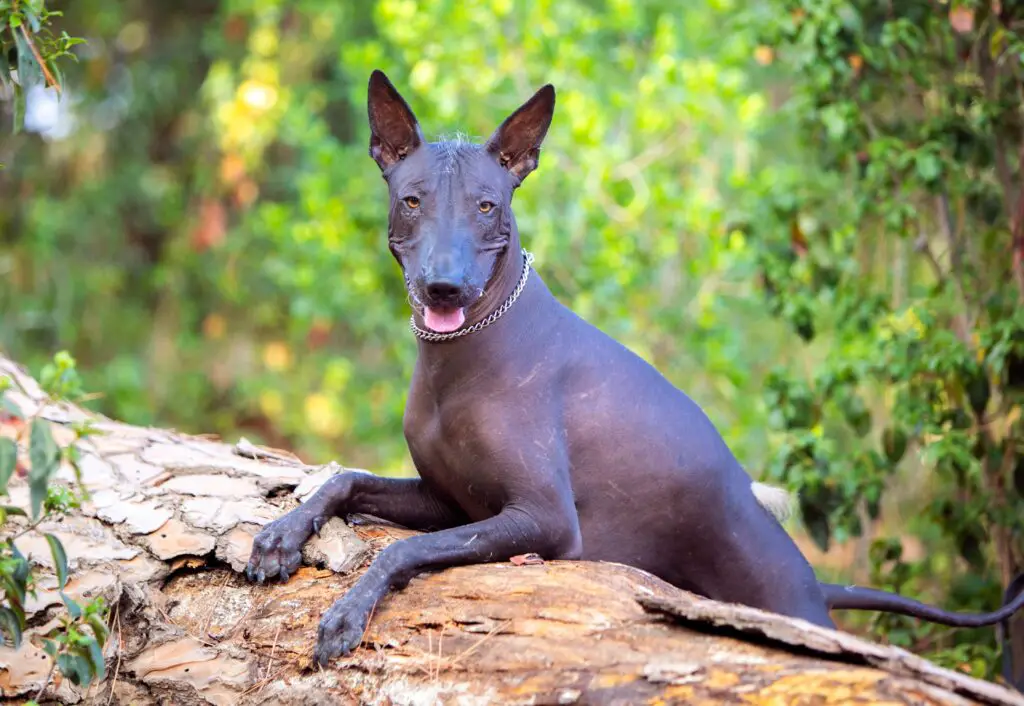
The Xoloitzcuintli, or Xolo for short, is the ancient Aztec dog of mystery. The Xoloitzcuintli Club of America reports that these dogs come in three sizes and two varieties: hairless for the sunscreen enthusiasts and coated for the fluff lovers. Ranging from 10 to 23 inches tall depending on their size category, Xolos are unique in both appearance and history. The American Kennel Club notes that there are about 30,000 worldwide, with roughly 6,000 in the United States. While not the rarest on our list, they’re certainly one of the most distinctive.
Xolos have a history dating back over 3,000 years in Mexico. They were considered sacred by the Aztecs, who believed they guided souls through the underworld. The hairless variety has smooth, tough skin that feels warm to the touch, while the coated variety has a short, flat coat. Xolos are known for their loyalty, intelligence, and calm demeanor. They’re also incredibly clean and are considered hypoallergenic. In 2016, the Xolo was named the official dog of Mexico City, cementing its status as a national treasure. Despite their growing popularity, Xolos remain relatively rare, especially outside of Mexico.
11. Cirneco dell’Etna
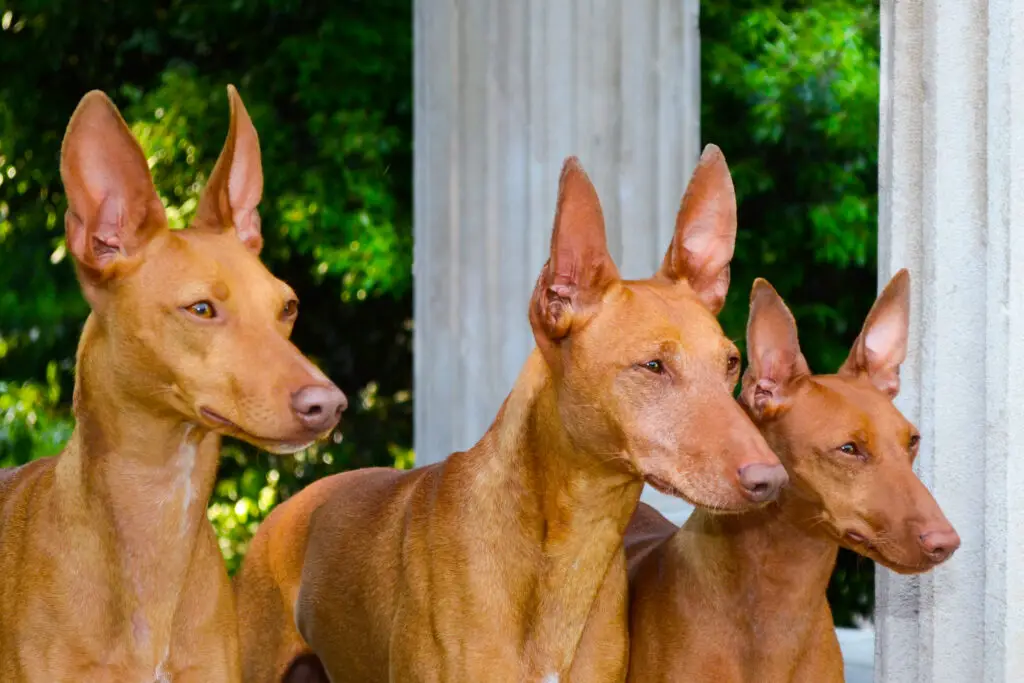
The Cirneco dell’Etna is Sicily’s best-kept secret. According to the Cirneco dell’Etna Club of America, these svelte sighthounds have been turning heads on the island for over 2,500 years. That’s older than most countries! Standing 17-20 inches tall and weighing a mere 17-26 pounds, Cirnechi are elegant and athletic. The American Kennel Club reports that there are only about 200-250 in the US, making them rarer than a quiet moment at an Italian family dinner. Their large, erect ears and tree-climbing abilities make them a unique addition to any family.
The Cirneco (pronounced “cheer-NEK-o”) is named after Mount Etna, the active volcano in Sicily where they originated. They were traditionally used for hunting rabbits and other small game in the rough terrain around the volcano. Despite their ancient lineage, Cirnechi were relatively unknown outside Sicily until the 1930s, when a Sicilian baroness named Agata Paternò Castello took an interest in preserving the breed. Cirnechi are known for their intelligence, affection, and ability to adapt to various living situations. They’re also remarkably agile, able to jump great heights and even climb trees. While they’re gaining recognition in the dog world, their rarity and unique characteristics make them a true conversation starter.
10. Azawakh
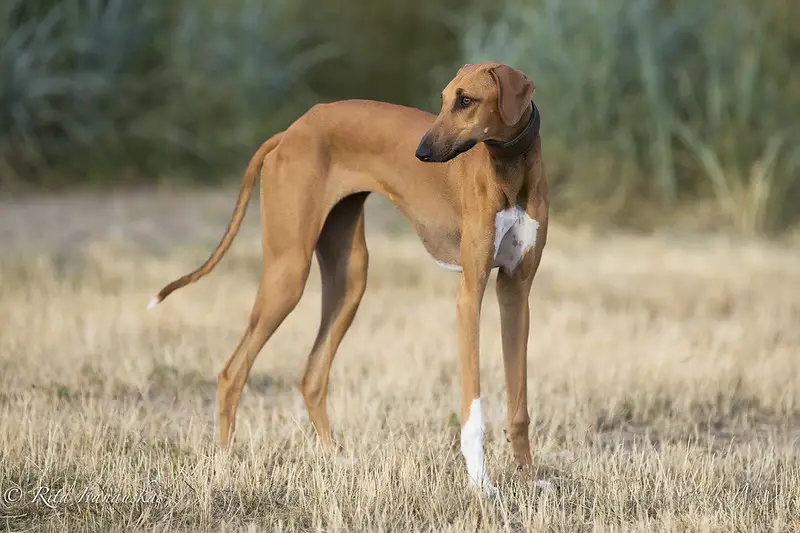
The Azawakh is the greyhound’s exotic cousin. The Azawakh Club of America explains that these West African sighthounds didn’t grace American soil until the 1980s. Talk about fashionably late to the party. Standing tall at 23-29 inches and weighing a svelte 33-55 pounds, Azawakhs are true supermodels of the dog world. The American Kennel Club estimates there are only about 300 in the US. With their ability to run up to 40 mph, they’re perfect for anyone who wants a dog that can outrun their car.
Originating from the Sahel region of West Africa, Azawakhs were traditionally kept by nomadic tribes like the Tuareg as hunting dogs and camp guardians. Their name comes from the Azawagh Valley in the Sahara. These dogs are so lean that their bones and musculature are visible through their skin, a trait prized in their native land. Azawakhs are known for their loyalty, intelligence, and independent nature. They form strong bonds with their families but can be aloof with strangers. Despite their recent recognition by the AKC in 2019, Azawakhs remain rare, partly due to their late introduction to the Western world and their specific care requirements.
9. New Guinea Singing Dog
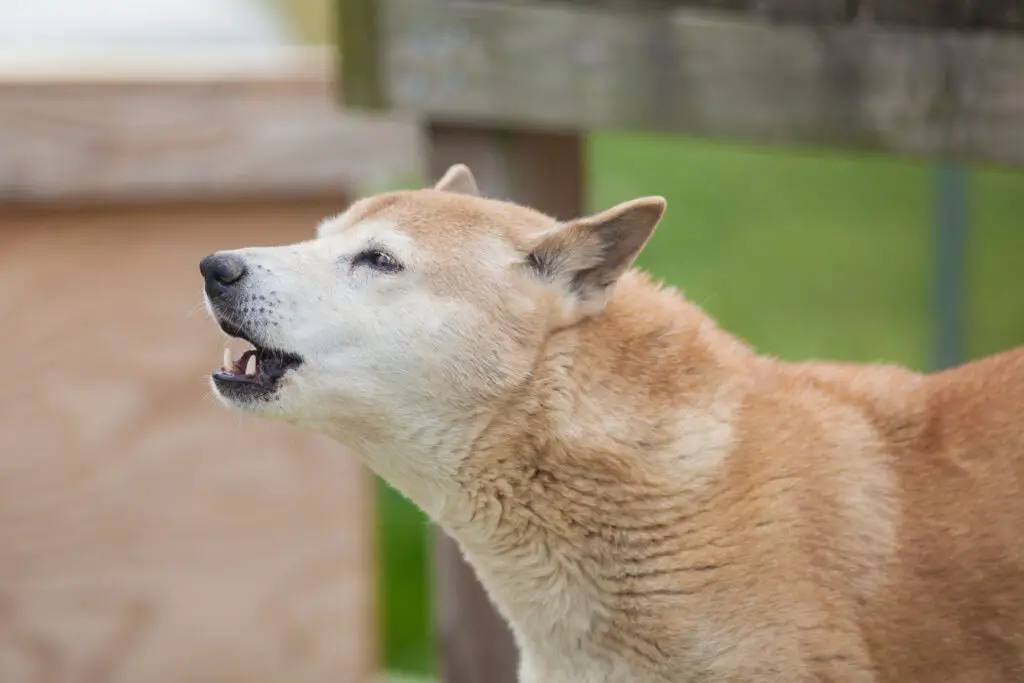
The New Guinea Singing Dog is the Pavarotti of the canine world. The New Guinea Singing Dog Conservation Society reports that these rare vocalists were once thought extinct in the wild. Their unique yodel-like howl is their claim to fame. Standing about 14-18 inches tall and weighing 20-30 pounds, these dogs have a fox-like appearance. According to the San Diego Zoo, there are only 200-300 in captivity worldwide. Recent expeditions have found some in the wild, proving that these canine hide-and-seek champions are still out there, probably practicing their scales.
New Guinea Singing Dogs, or “Singers” as they’re affectionately known, are native to the New Guinea Highlands. They’re closely related to the Australian Dingo and are considered by some to be the same species. Their unique vocalization, which sounds like a mix between a wolf’s howl and a whale’s song, is used for communication and can be modulated to create different pitches. Singers are known for their extreme agility – they can rotate their front and hind legs in a way that allows them to climb trees! While they’re not typically kept as pets, those who have worked with them report that they’re intelligent, playful, and highly independent. Their discovery in the wild in 2016 was a major breakthrough for conservationists and canine enthusiasts alike.
8. Chinook
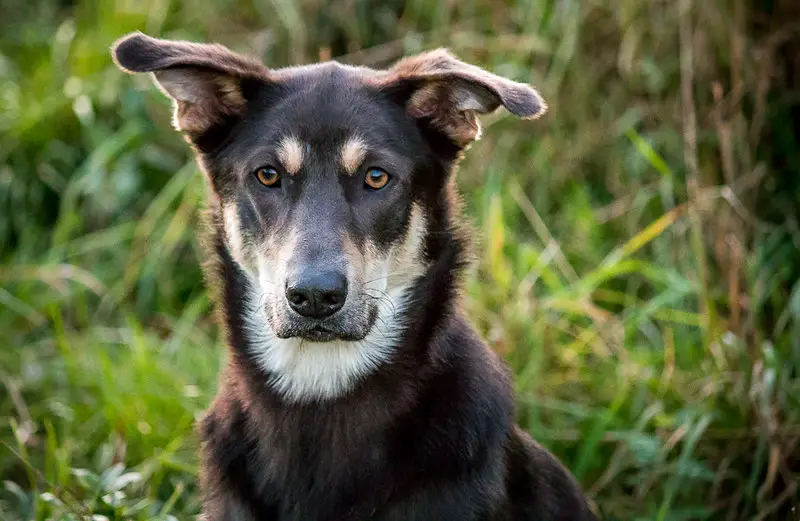
The Chinook is like a husky crossed with a teddy bear. The Chinook Club of America shares that these fluffy powerhouses were once down to just 28 dogs worldwide. Talk about a close call! Standing 21-27 inches tall and weighing 50-90 pounds, Chinooks are substantial dogs with a thick, tawny-colored coat. The American Kennel Club notes that there are now about 800 globally. They’re the official state dog of New Hampshire, which is like going from the endangered species list to winning a popularity contest.
Chinooks were developed in New Hampshire in the early 20th century by Arthur Treadwell Walden, who wanted to create the perfect sled dog. The breed is named after Walden’s lead dog, Chinook, who was born in 1917. Chinooks are known for their gentle, even temperament and their love of children. They’re intelligent and eager to please, making them relatively easy to train. However, their near-extinction in the 1960s created a genetic bottleneck, and breeders are still working to expand the gene pool. Chinooks excel in various dog sports and activities, particularly in sledding and skijoring. Their combination of strength, speed, and friendly demeanor makes them unique among northern breeds.
7. Estrela Mountain Dog
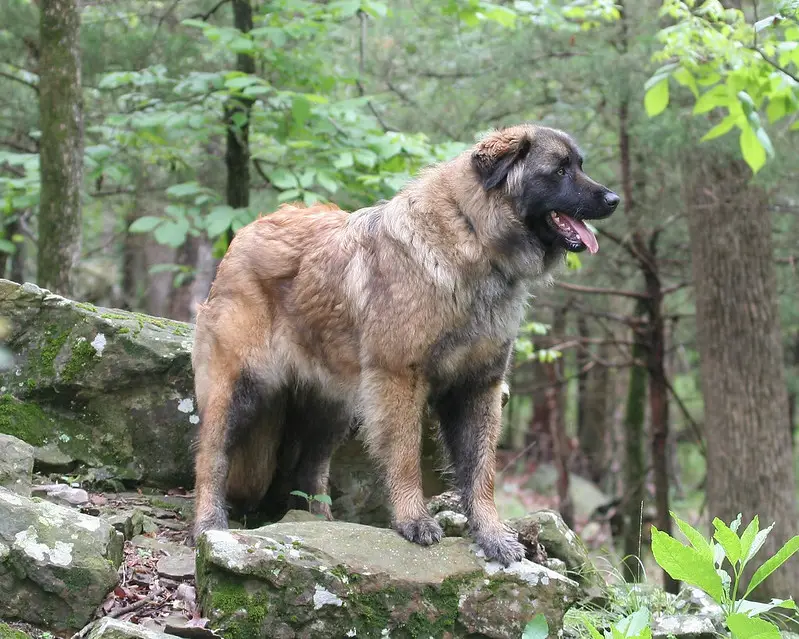
The Estrela Mountain Dog is Portugal’s fluffy secret. The American Kennel Club explains that these gentle giants look like walking, barking teddy bears, if teddy bears could guard sheep and give bear hugs. Standing 22-29 inches tall and weighing a substantial 70-130 pounds, Estrelas are imposing dogs with a thick, weather-resistant coat. The Estrela Mountain Dog Association of America estimates there are only about 10,000 worldwide, with most living in Portugal. They even have built-in snow boots (double dewclaws), perfect for their mountainous homeland.
Estrela Mountain Dogs, named after the Serra da Estrela mountains in Portugal, are one of the oldest breeds in the Iberian Peninsula. They were traditionally used to guard flocks against wolves and other predators. Estrelas come in two coat varieties: long and short, with colors ranging from fawn to wolf gray. Their most distinctive feature is their double dewclaws on the hind legs, which gave them extra traction on steep, rocky terrain. Estrelas are known for their loyalty, intelligence, and protective nature. They’re gentle with their families but can be wary of strangers, making them excellent guard dogs. Despite their long history, Estrelas remain relatively unknown outside Portugal, contributing to their rarity.
6. Otterhound
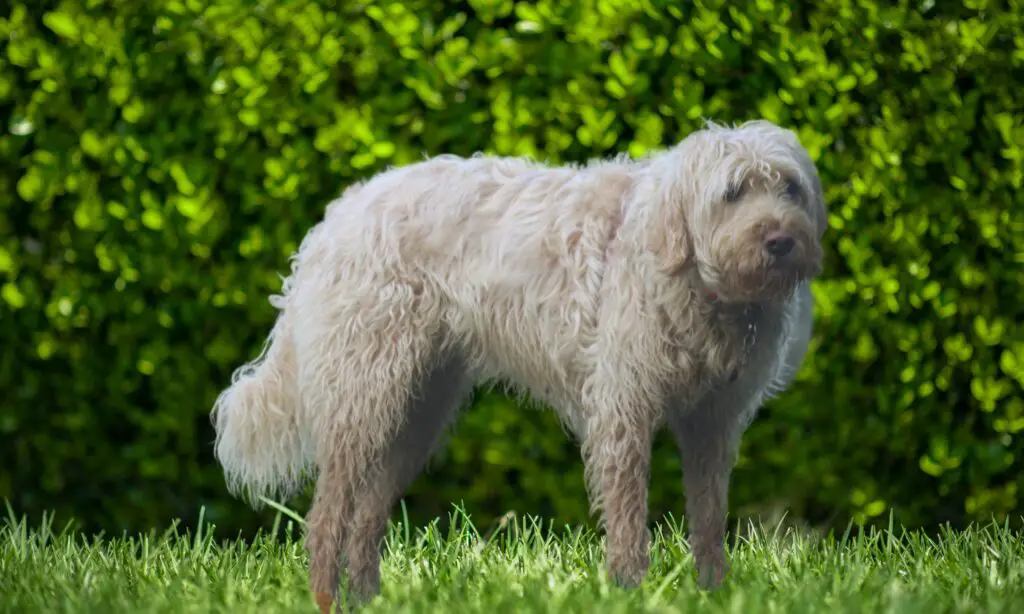
The Otterhound is the shaggy Sherlock Holmes of the dog world. Originally bred to hunt otters in Britain, these water-loving woofs are now incredibly rare. The Kennel Club reports that only 14 puppies were registered in the UK in 2022. Standing 24-27 inches tall and weighing 80-115 pounds, Otterhounds are large, rough-coated hounds with a booming voice. The American Kennel Club estimates there are only about 600 left worldwide. Their powerful nose can track scents underwater, making them the ultimate canine detectives.
Otterhounds have a history dating back to medieval England, where they were used to hunt otters that were depleting fish stocks in rivers. Their webbed feet and waterproof double coat made them perfect for this aquatic pursuit. The breed’s numbers declined sharply when otter hunting was banned in the UK in 1978. Otterhounds are known for their friendly, boisterous nature and their love of water – don’t be surprised if your Otterhound tries to join you in the bathtub! They have a deep, melodious voice that they’re not shy about using. Despite their rarity, Otterhounds have a devoted following who appreciate their unique combination of size, strength, and good-natured personality.
5. Telomian
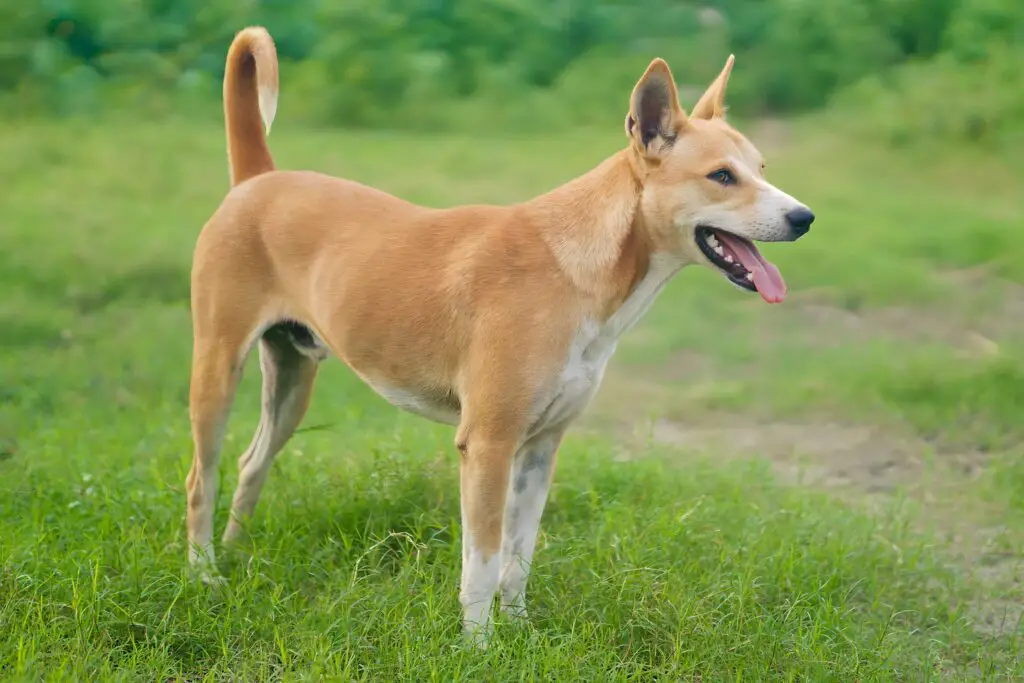
The Telomian is Malaysia’s ladder-climbing canine. Yes, you read that right – these dogs can climb ladders. The American Rare Breed Association explains that they were bred by the Orang Asli people to hunt vermin around their stilt houses. Standing 15-19 inches tall and weighing 18-28 pounds, Telomians are medium-sized dogs with some serious acrobatic skills. While exact numbers are hard to come by, they’re extremely rare outside of Malaysia. All Telomians outside their native country are believed to descend from just two pairs brought to the US in the 1960s and 70s.
Telomians were first discovered by Western researchers in 1963 when anthropologist Dr. Orville Elliot encountered them near the Telom River in Pahang, Malaysia. Their unique ability to climb ladders developed as an adaptation to reach the elevated houses of their owners. Telomians have a wedge-shaped head, prick ears, and a short, smooth coat that comes in a variety of colors. They’re known for their intelligence, agility, and adaptability. Telomians are also relatively quiet for a primitive breed, which might make them suitable for apartment living (just make sure your balcony is secure!). Their rarity and unique skills make them a subject of fascination for dog enthusiasts, but their limited gene pool outside Malaysia presents challenges for breeding and conservation efforts.
4. Catalburun

The Catalburun, or Turkish Pointer, is the dog world’s answer to the split-nose emoji. According to the Turkish Journal of Veterinary and Animal Sciences, these rare pups from the Tarsus region of Turkey are instantly recognizable thanks to their divided noses. Standing about 20-22 inches tall and weighing 40-50 pounds, Catalburuns are medium-sized dogs with a unique appearance. DogZone reports that there are only about 200 in existence. Their split nose supposedly gives them an enhanced sense of smell, making them excellent hunters and potential wine connoisseurs.
The name “Catalburun” literally means “fork-nose” in Turkish, referring to their most distinctive feature. This split nose is a naturally occurring trait that’s been selectively bred for in this particular region of Turkey. Catalburuns are primarily used for hunting, particularly for tracking partridges. Their unique nose structure is believed to enhance their already keen sense of smell, although this hasn’t been scientifically proven. The breed is so rare that it’s virtually unknown outside of Turkey, and even within the country, it’s primarily found in the Tarsus region. Catalburuns are known for their high energy, intelligence, and strong hunting instincts. They’re loyal to their families but can be reserved with strangers. The breed’s rarity and unique appearance have sparked interest among some dog enthusiasts, but strict exportation laws in Turkey make it challenging to obtain a Catalburun outside its native region.
3. Peruvian Inca Orchid
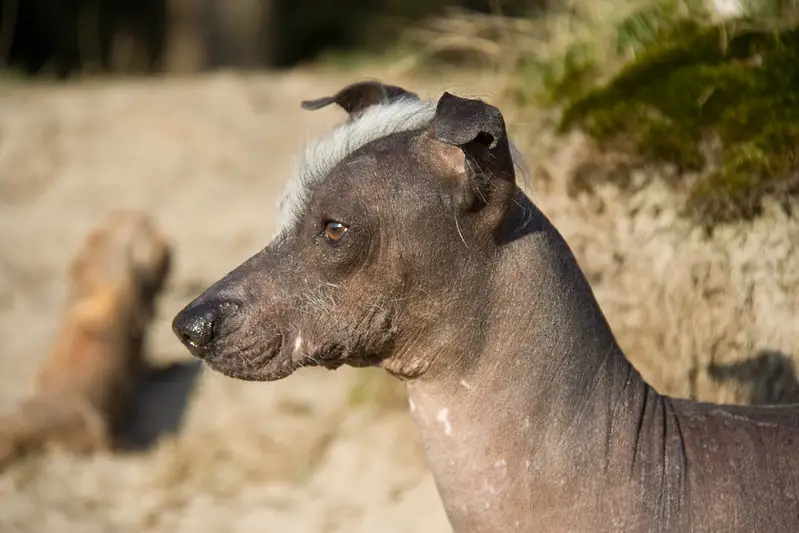
The Peruvian Inca Orchid, or PIO for short, is the supermodel of the dog world. According to the American Kennel Club, these hairless (or sometimes coated) beauties come in three sizes, from “fits in your purse” to “small pony.” PIOs range from 10 to 26 inches tall and can weigh anywhere from 8.5 to 55 pounds, depending on their size category. The Peruvian Inca Orchid Club of America estimates there are only about 1,000 in existence. Originally bred for hunting small prey, they’ve since upgraded their resume to include “professional sunbather” and “living, breathing hot water bottle.”
The PIO’s history dates back over 3,000 years in Peru, where they were considered sacred by the Inca civilization. They were often depicted in Incan art and were believed to have healing powers. The hairless variety has smooth, supple skin that can be solid or spotted in various colors, while the coated variety has a short, fine coat. PIOs are known for being affectionate with their families and good with children. They’re also intelligent and trainable, though they can have a stubborn streak. In 2001, the Peruvian government declared the PIO a National Cultural Heritage, recognizing its significance to the country’s history and culture. Despite this recognition, PIOs remain rare, partly due to the challenges of breeding hairless dogs and the specific care requirements for their exposed skin.
2. Norwegian Lundehund
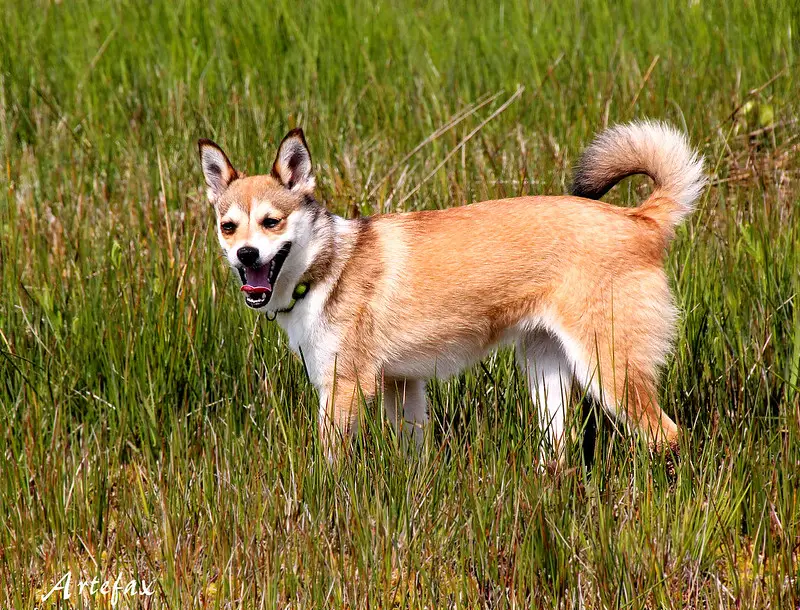
The Norwegian Lundehund is the six-toed acrobat of the dog world. The Norwegian Lundehund Association of America explains that these puffin-hunting pros can bend their head backward to touch their spine and close their ears at will. It’s like they’re the Swiss Army knife of dogs. Standing 12-15 inches tall and weighing 13-20 pounds, Lundehunds are small but mighty. According to the American Kennel Club, they nearly went extinct in the 1960s, with only six dogs left. Now there are about 1,500 worldwide, which is still pretty rare. Owning one is like having a piece of living Norse history that can also do yoga.
Lundehunds were developed on the remote islands of northern Norway to hunt puffins and their eggs on steep, rocky cliffs. Their unique adaptations include six fully formed toes on each foot for better grip, the ability to close their ear canals to keep out water and debris, and incredible flexibility that allows them to squeeze into tight spaces. The breed’s name comes from the Norwegian words “lunde” for puffin and “hund” for dog. Lundehunds faced near-extinction multiple times, most severely during World War II and again in the 1960s due to canine distemper. The breed’s recovery is a testament to dedicated conservation efforts, but their numbers remain low. Lundehunds are known for their playful, curious nature and their strong climbing abilities. However, they can be challenging to train and often have specific dietary needs due to a genetic predisposition to digestive issues.
1. Sakhalin Husky

The Sakhalin Husky takes the crown as our rarest breed. According to the Primitive and Aboriginal Dog Society, there are only about 20 purebred Sakhalin Huskies left in the world. To put that in perspective, there are more letters in the alphabet than there are Sakhalin Huskies. Standing 22-26 inches tall and weighing 66-88 pounds, these dogs have a thick double coat built for harsh conditions. The American Rare Breed Association highlights their crucial role in Antarctic expeditions during the early 20th century. Their most famous moment? In 1958, two Sakhalin Huskies named Taro and Jiro survived for a year alone in Antarctica after a Japanese expedition was forced to evacuate. Talk about extreme survival skills.
These dogs, also known as Karafuto Ken, have a history as dramatic as a soap opera. Originally bred by the Nivkh people of Sakhalin Island for sledding and hunting, they nearly went extinct multiple times. The breed faced challenges during Soviet rule, World War II, and the advent of snowmobiles. Despite their dire situation, Sakhalin Huskies are known for their intelligence, loyalty, and incredible endurance. They can drag more than 150 pounds of cargo over distances as long as 62-93 miles at speeds of 6-7 mph. Their calm temperament and ability to navigate through blizzards made them invaluable to early explorers. Today, conservation efforts are underway, but with such a small population, the future of this extraordinary breed hangs by a thread. Owning a Sakhalin Husky isn’t just rare – it’s like having a living, breathing piece of history that also needs regular walks and belly rubs.


